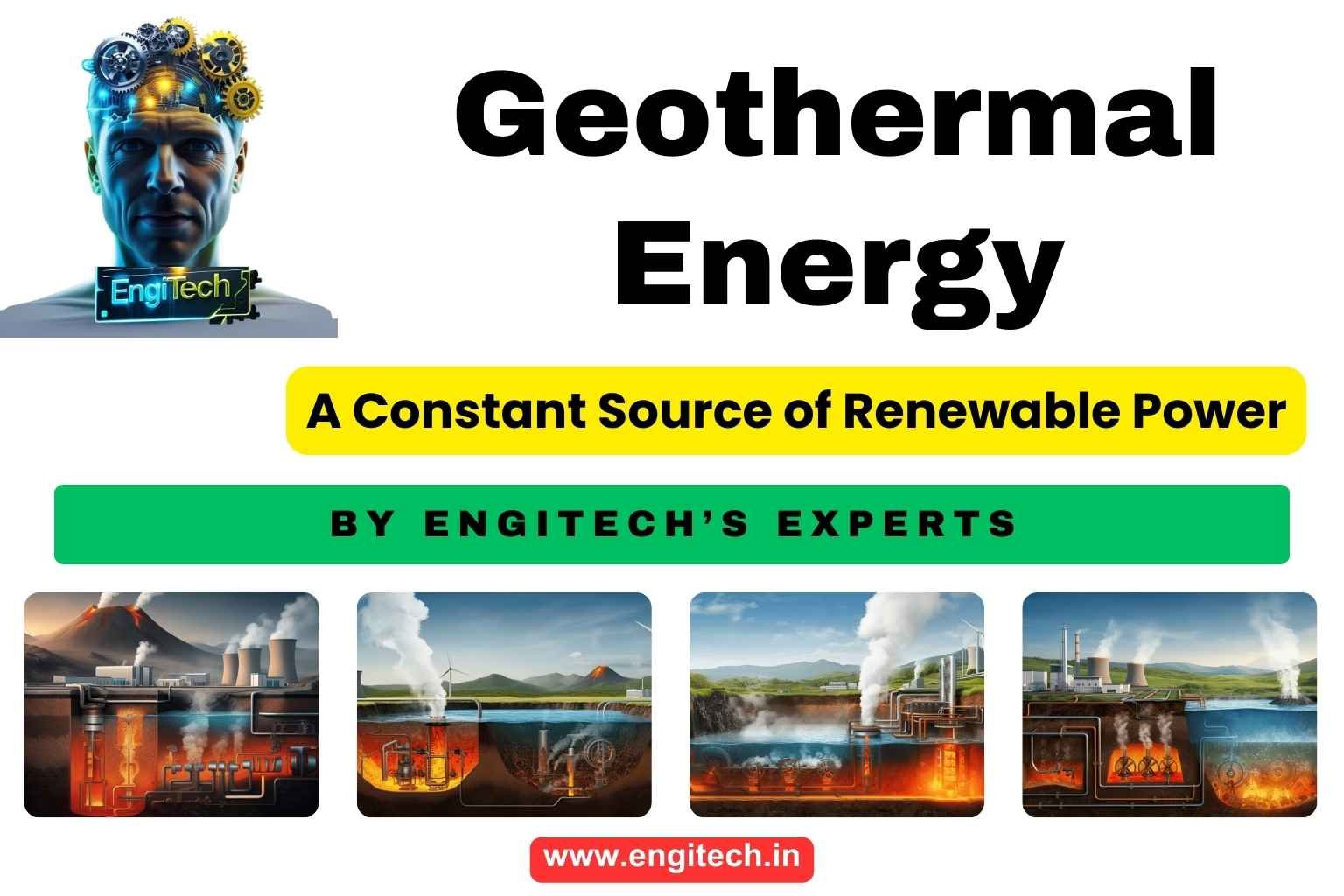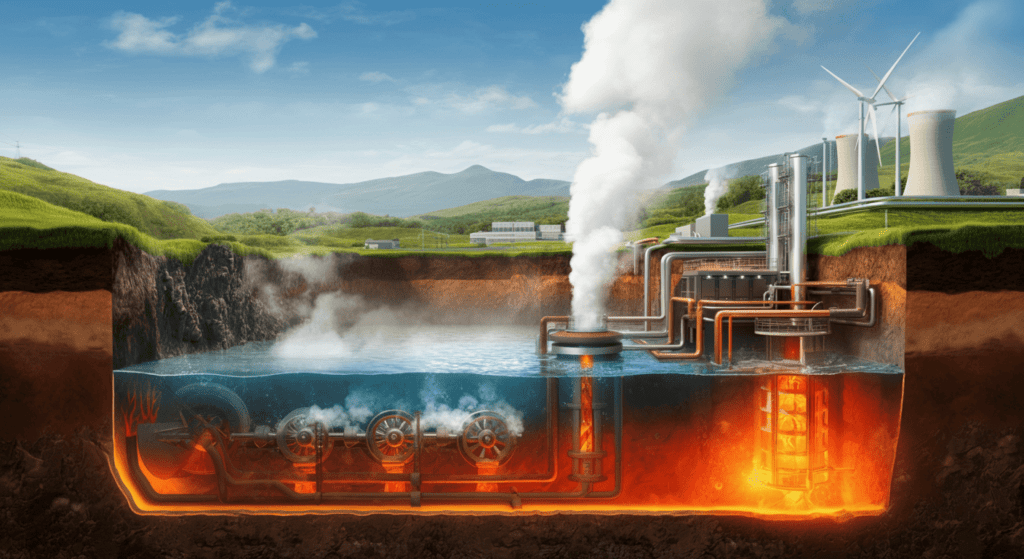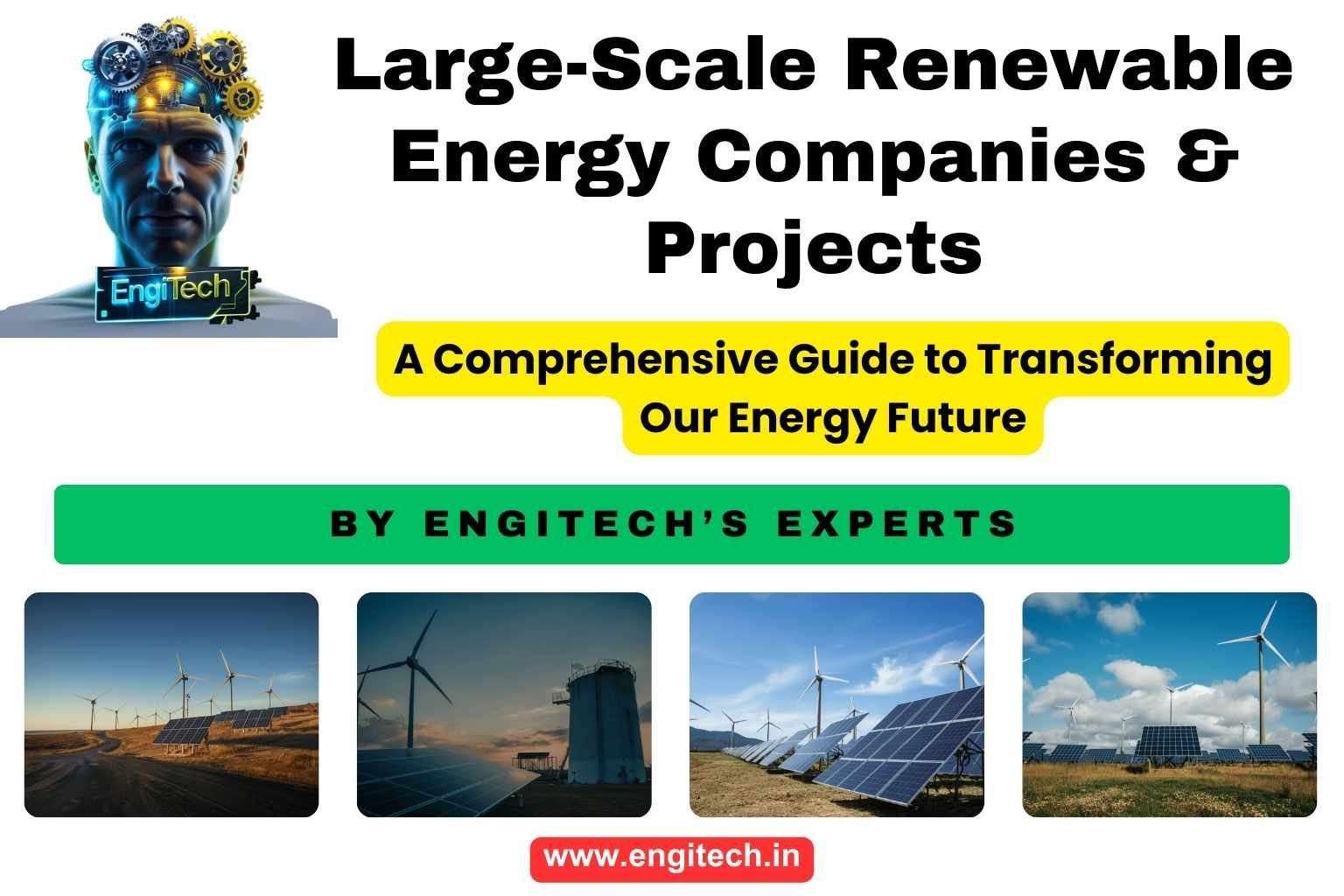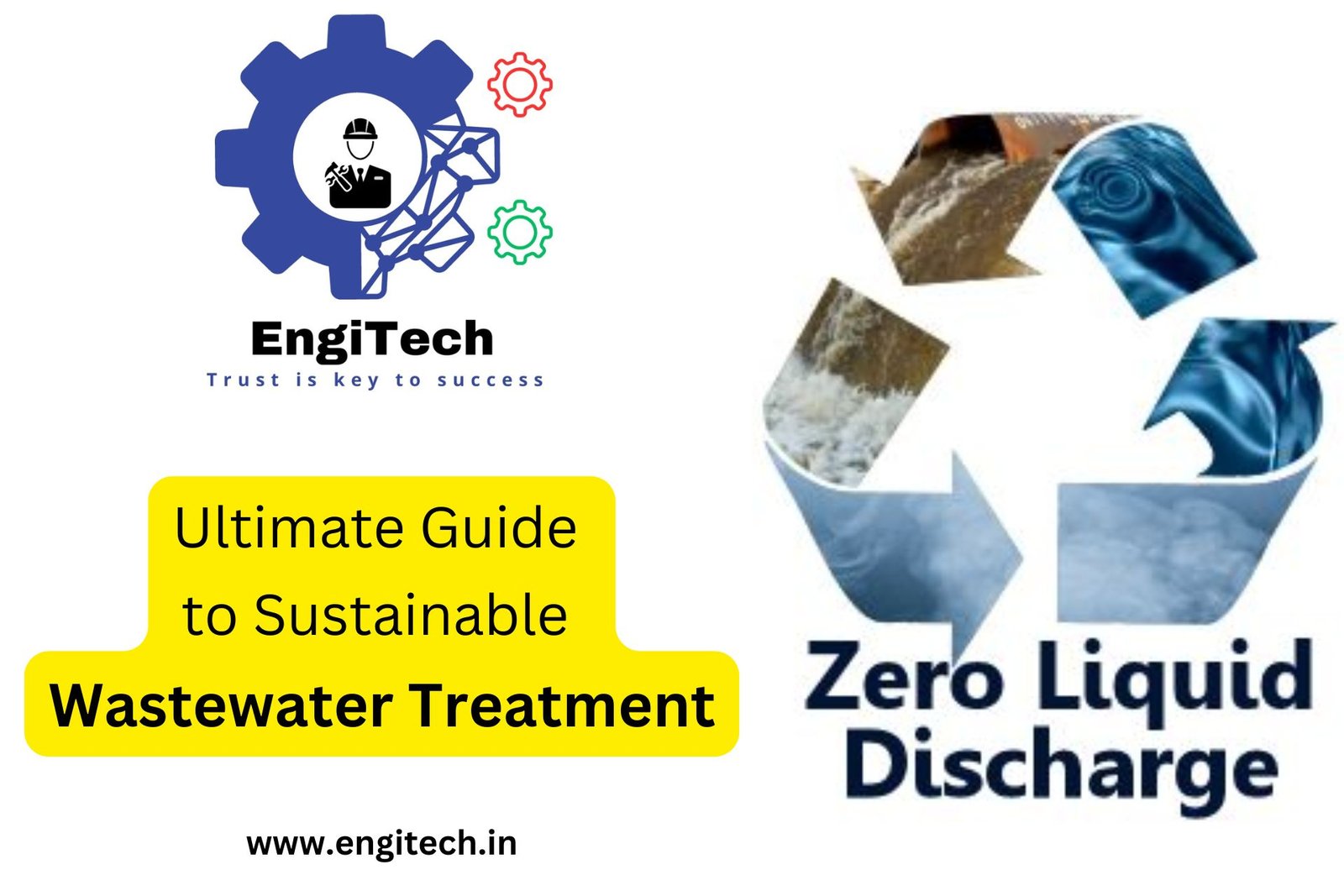Geothermal Energy: A Constant Source of Renewable Power

Imagine tapping into the Earth’s own heat to power our homes, offices, and entire cities—24 hours a day, seven days a week. That’s precisely the promise of Geothermal Energy: A Constant Source of Renewable Power. In a world rapidly seeking cleaner and more reliable energy options, geothermal stands out as one of the most underappreciated yet remarkably steady resources.
This guide will walk you through everything you need to know: from understanding the science of geothermal energy, to exploring its viability as a baseload power source, to learning the ins and outs of geothermal power plants and how they contribute to a more sustainable future. By the time you reach the end, you’ll have a solid grasp of what geothermal energy is, why it matters, and how you can be part of its global rise.
Table of Contents
Introduction to Geothermal Energy
Geothermal energy might sound futuristic, but humans have actually been harnessing the Earth’s natural heat for thousands of years. The term “geothermal” comes from the Greek words geo (Earth) and therme (heat). Early civilizations capitalized on hot springs for bathing and medicinal purposes, never fully grasping how this dependable source of heat could one day play a pivotal role in global energy production.
In our current era, we’re more aware than ever of the pressing need to transition away from fossil fuels. This shifting landscape has put geothermal energy plants under the spotlight as a significant, yet often overlooked, candidate for meeting baseload energy demand. Unlike wind or solar power, which can fluctuate with weather patterns, geothermal power offers a consistent stream of energy day and night. For regions around the world that sit atop geothermal “hotspots,” the potential is massive.
In the following sections, we’ll dive deep into how geothermal energy is formed, the technologies that capture it, and how it stands to reshape the global energy market. Stick around, because this could very well be the solution many nations are looking for to balance the grid with a clean and constant source of renewable power.

How Geothermal Energy Works
1. The Earth’s Internal Heat
At the core of our planet, radioactive decay of elements like uranium, thorium, and potassium generates intense heat. This heat radiates outward through layers of molten rock and water reservoirs. Where this heated water and steam find pathways to the surface—often through cracks and fissures—hot springs, geysers, and fumaroles appear. Harnessing this naturally occurring heat for electricity and direct use applications is the essence of geothermal energy.
2. Geothermal Reservoirs
Beneath the Earth’s surface lie geothermal reservoirs, which are essentially pockets of hot water and steam trapped in porous rock. By drilling into these reservoirs, engineers can channel the superheated fluid or steam into a geothermal plant. Once at the surface, the pressure drops, causing the water to flash into steam. The steam then drives turbines that power generators, thus creating electricity.
3. The Role of Technology
Modern geothermal power plants rely heavily on drilling techniques borrowed from the oil and gas industry. Geologists and engineers use advanced mapping technologies like seismic imaging to locate potential reservoirs. For enhanced geothermal systems (EGS), they may even fracture subsurface rocks to increase permeability, thereby expanding the reservoir and maximizing energy extraction.
4. Closed-Loop Systems
A critical element of sustainable geothermal energy is re-injection. After passing through the turbines, the cooled water is often pumped back into the reservoir. This closed-loop system helps maintain reservoir pressure and ensures the resource remains renewable. It also minimizes environmental impact by preventing surface discharge and preserving water resources.
By understanding these fundamentals, you’re already seeing why geothermal power energy is not just a fringe option but a mainstay technology with a proven track record of delivering results. Let’s now explore the different types of geothermal power plants that bring this energy to our homes and industries.
Types of Geothermal Power Plants
When people talk about a “geothermal energy plant,” they’re usually referring to one of three main types:
1. Dry Steam Power Plants
- How It Works: These plants utilize steam directly from geothermal reservoirs. The steam flows straight to a turbine, which drives an electrical generator.
- Where It’s Common: Dry steam plants are the oldest type, found in places like the Geysers in California (USA).
- Pros and Cons: While simple and highly efficient, they require very specific geothermal conditions—namely, the presence of dry steam reservoirs.
2. Flash Steam Power Plants
- How It Works: Hot water from a geothermal well under high pressure flashes into steam when it reaches lower pressure at the surface. The steam then powers a turbine.
- Applications: Flash steam plants are among the most common geothermal facilities worldwide, especially in countries like Iceland, Japan, and the Philippines.
- Pros and Cons: They can handle higher reservoir temperatures and are more flexible, but they still rely on substantial underground water resources.
3. Binary Cycle Power Plants
- How It Works: Hot water from the reservoir circulates through a heat exchanger that contains a secondary, low-boiling-point fluid (like isobutane or isopentane). The secondary fluid vaporizes, driving a turbine.
- Advantages: Because the water and secondary fluid never mix, the plant can operate at lower temperatures and in locations where flash or dry steam systems would be inefficient.
- Pros and Cons: Binary cycle plants are highly versatile and can be used in a wider range of geological settings, though they typically have a slightly lower power output compared to flash systems.
Each of these designs is engineered to capitalize on different geothermal conditions. Understanding which is best suited for a particular site depends on a complex interplay of reservoir temperature, depth, and local geography. However, regardless of design, geothermal power plants are recognized for their reliability and minimal environmental footprint compared to fossil-fuel-based facilities.

Global Hotspots for Geothermal Power
If you were to look at a map of global geothermal energy development, you’d see a pattern following the tectonic “Ring of Fire” around the Pacific Ocean. This region includes parts of North and South America, East Asia, and the islands of the Pacific. However, geothermal potential isn’t limited to these areas alone.
- United States
- The USA leads in installed geothermal capacity, with significant projects concentrated in California, Nevada, and Utah. According to the U.S. Energy Information Administration (EIA), geothermal power meets a significant share of these states’ electricity demands.
- Iceland
- Famous for its volcanic landscape, Iceland produces over 25% of its electricity from geothermal sources. Additionally, 90% of its heating needs are met through direct geothermal use.
- Indonesia and the Philippines
- Blessed with abundant volcanoes and tectonic activity, these Southeast Asian nations rank among the top producers of geothermal electricity worldwide. The Philippines, in particular, leverages geothermal energy plants to reduce dependence on imported fossil fuels.
- Kenya
- Kenya leads Africa in geothermal development. The Olkaria Geothermal Plant near the Great Rift Valley is a landmark project, elevating Kenya’s status as a renewables pioneer on the continent.
- New Zealand
- Home to the Wairakei Geothermal Power Station, one of the first large-scale plants to harness geothermal energy for electricity. New Zealand’s geothermal resources help the country maintain a high ratio of renewables in its energy mix.
While certain regions enjoy a head start, potential sites for geothermal power energy exist in many parts of the world. As drilling and exploration technologies become more advanced and cost-effective, more countries are expected to tap into geothermal resources.
Advantages of Geothermal Energy
Why are so many governments, corporations, and communities excited about geothermal energy? The list of advantages is both extensive and compelling:
1. Baseload Reliability
Unlike solar and wind, geothermal power isn’t weather-dependent. It’s a continuous source, providing stable and predictable energy that can serve as the backbone of a regional grid.
2. Low Carbon Footprint
Generating electricity using geothermal power plants releases significantly fewer greenhouse gases compared to fossil-fuel plants. While some CO₂ and other gases may surface from geothermal reservoirs, the volume is minimal, especially in closed-loop systems.
3. Small Land Footprint
A geothermal energy plant typically occupies a smaller area than wind or solar farms producing comparable amounts of electricity. This reduced land footprint mitigates conflicts with agriculture, urban development, and wildlife habitats.
4. Local Economic Benefits
Constructing a geothermal plant often requires hiring local workers, stimulating regional economies. Once operational, geothermal facilities provide stable, long-term jobs in areas like plant operation, maintenance, and field support.
5. Direct Use Opportunities
Beyond electricity, geothermal resources can heat buildings, greenhouses, and even fish farms. This direct use can further offset fossil fuel consumption and expand local industries.
In an age of climate anxiety and the urgent search for renewables, geothermal power stands out for its reliability, sustainability, and economic potential. However, no energy source is perfect—next, we’ll examine some challenges that come with harnessing the Earth’s natural heat.

Challenges and Limitations
Although geothermal power energy checks many boxes for a sustainable and reliable power source, it’s not without hurdles:
- High Initial Costs
- Drilling wells and conducting exploratory research can be expensive. Many projects require significant capital investment upfront before confirming the viability of a geothermal reservoir.
- Site-Specific Nature
- Not every region has easily accessible geothermal reservoirs. Some areas have geothermal potential locked deep underground, requiring advanced (and costly) drilling techniques.
- Geological Risks
- Even after extensive research, there’s always a possibility that a site won’t deliver the expected yield. For enhanced geothermal systems, artificially fracturing the Earth’s crust can trigger minor seismic activity.
- Public Perception and Policy
- In some jurisdictions, the regulatory framework for geothermal is less mature compared to wind or solar. This can slow development and deter investors.
- Competition with Other Renewables
- The falling cost of solar and wind energy has overshadowed geothermal in certain regions. While geothermal offers baseload power, it sometimes struggles to compete with the simplicity and rapidly declining costs of photovoltaics.
By recognizing and planning for these challenges, industry leaders and policymakers can optimize geothermal’s many benefits. Overcoming these obstacles often involves collaboration between governments, private investors, and scientific institutions to mitigate risks and streamline development.
Environmental Impact and Sustainability
1. Lower Greenhouse Gas Emissions
As noted, geothermal energy plants emit far fewer greenhouse gases relative to coal, oil, or natural gas power facilities. According to the International Energy Agency (IEA), geothermal power produces an average of 45 grams of CO₂ per kilowatt-hour, substantially less than fossil fuels.
2. Limited Water Usage
Many geothermal systems use and then re-inject water. This closed cycle reduces net water consumption. In regions where water is scarce, binary cycle technology further minimizes resource usage.
3. Minimal Land Disturbance
Because geothermal plant equipment can be tucked away in relatively small footprints, there’s less disruption to ecosystems. In fact, some geothermal facilities coexist with natural reserves, promoting eco-tourism and local biodiversity.
4. Seismic Concerns
The risk of induced seismicity arises primarily in enhanced geothermal systems. However, most induced tremors are minor, and stringent regulations typically govern injection protocols to minimize risk.
5. Sustainable for the Long Haul
Geothermal reservoirs can last for decades, if not centuries, with proper management and re-injection strategies. This longevity positions geothermal as a truly constant source of renewable power rather than a mere short-term solution.
Collectively, these factors solidify geothermal as a net-positive for environmental sustainability, especially when projects follow responsible practices and stringent safety protocols.
Direct Use Applications Beyond Electricity
It’s easy to fixate on electricity generation, but one of the biggest advantages of geothermal energy lies in its versatility. Direct use applications can significantly cut fossil fuel consumption for heating and industrial processes. Here are some examples:
- District Heating
- Cities like Reykjavik in Iceland utilize geothermal water to heat homes, offices, and commercial buildings. This district heating approach slashes emissions and drastically reduces the need for imported fuel.
- Agriculture and Aquaculture
- Geothermal-heated greenhouses and fish farms operate efficiently year-round. Regions like New Zealand and Turkey have pioneered commercial greenhouse production using geothermal heat.
- Spa and Wellness Tourism
- Geothermal hot springs often become hubs for spas, resorts, and health tourism, injecting a steady flow of revenue into local economies.
- Industrial Uses
- From drying timber to pasteurizing milk, geothermal process heat can be used across various industries, making these operations less dependent on non-renewable energy.
Diversifying geothermal’s applications not only expands its impact but also makes projects more financially viable. By generating multiple revenue streams—electricity sales, heating applications, tourism—communities can maximize the return on their geothermal assets.
Cost Considerations and Economic Viability
1. Upfront Capital Investment
The high initial cost for exploration, drilling, and power plant construction can be a barrier. In some regions, these costs deter development, especially if cheaper alternatives like solar or wind are available.
2. Long-Term Operation and Maintenance
Once operational, a geothermal plant typically has lower operational costs compared to coal or natural gas plants. Fuel costs are negligible (the Earth’s heat is free!), and maintenance is relatively predictable.
3. Government Incentives and Subsidies
Policies play a vital role in making geothermal projects financially attractive. Tax incentives, low-interest loans, and feed-in tariffs can significantly shorten payback periods. Several countries, including the United States and those in the European Union, offer specific geothermal incentives to encourage development.
4. Levelized Cost of Electricity (LCOE)
When evaluated over the entire life cycle, the levelized cost of electricity for geothermal can be very competitive—often in the same range as wind or solar. Unlike intermittent renewables, geothermal provides constant baseload power, which can save costs related to energy storage or backup power plants.
5. Community and Social Impact
Geothermal projects can offer stable, high-paying local jobs, thereby gaining community support. Enhanced local economies often lead to a smoother permitting process and more favorable public opinion.
By balancing the initial capital expenditure with operational savings and ancillary benefits—like district heating or spa tourism—geothermal can emerge as an economically viable cornerstone of a community’s renewable energy portfolio.
Emerging Technologies and Innovations
The future of geothermal power energy looks bright, thanks to evolving technologies:
- Enhanced Geothermal Systems (EGS)
- Engineers create artificial pathways in hot, dry rock formations to improve water flow. This innovation expands the potential for geothermal development in regions lacking natural hydrothermal resources.
- Closed-Loop Geothermal Systems
- Instead of drawing steam from the Earth, these systems circulate a working fluid through a closed loop to absorb heat. Closed-loop approaches reduce environmental impact and can be deployed in a broader range of locations.
- Hybrid Renewables
- Some power plants combine geothermal with solar or biomass to optimize resource usage. Hybrid setups ensure steady output while taking advantage of multiple renewable sources.
- Directional Drilling and Advanced Exploration
- Borrowing from the oil and gas sector, directional drilling can tap more complex geothermal reservoirs. Better imaging and exploration software reduce uncertainty and financial risk.
- Small and Modular Geothermal Units
- Compact plants could allow communities with modest geothermal resources to generate electricity locally. These smaller-scale projects are often easier to finance and permit.
As research accelerates and development costs decline, these innovations promise to extend geothermal’s reach. The International Renewable Energy Agency (IRENA) predicts significant growth in geothermal capacity worldwide, driven by technological breakthroughs and strong policy support.

Case Studies of Successful Geothermal Projects
1. The Geysers, USA
- Location: Northern California
- Significance: Boasting the world’s largest complex of geothermal power plants, The Geysers produce enough electricity to power nearly a million homes.
- Key Takeaway: With proper reservoir management and re-injection, The Geysers serve as a model for longevity and reliability in geothermal.
2. Hellisheiði Power Station, Iceland
- Location: Southwest Iceland
- Significance: One of the largest geothermal power plants in the world, Hellisheiði generates approximately 300 MW of electricity and 400 MW of thermal energy for district heating.
- Key Takeaway: Iceland’s commitment to renewables demonstrates how a nation can leverage abundant geothermal resources to power everything from homes to heavy industry.
3. Olkaria Geothermal Complex, Kenya
- Location: Rift Valley, Kenya
- Significance: Africa’s largest geothermal installation, the Olkaria complex has a capacity exceeding 800 MW. It significantly reduces Kenya’s reliance on fossil fuels.
- Key Takeaway: Geothermal development isn’t limited to high-income countries—Kenya’s success showcases the technology’s potential in emerging economies.
4. Sarulla Geothermal Project, Indonesia
- Location: North Sumatra, Indonesia
- Significance: Sarulla is one of the world’s biggest geothermal power plants, with a capacity of over 300 MW. It’s the result of a multinational collaboration bringing substantial investment and technology to Indonesia.
- Key Takeaway: Public-private partnerships can accelerate large-scale geothermal development in resource-rich but capital-scarce regions.
These examples illustrate that geothermal isn’t just a theoretical possibility but a practical solution already making a significant impact. From the USA to East Africa, geothermal power is quietly but effectively reshaping regional energy landscapes.
Frequently Asked Questions (FAQs)
Below are some common questions and concise answers regarding geothermal energy and its applications:
Q1: Is geothermal energy truly renewable?
Answer: Yes. By re-injecting the cooled water back into the reservoir and carefully managing the resource, geothermal fields can sustain heat extraction for decades or even centuries.
Q2: How does geothermal compare in cost to other renewables like solar or wind?
Answer: Upfront costs can be higher, especially for exploration and drilling. However, once operational, geothermal often has lower ongoing expenses. It also provides reliable baseload power without needing energy storage solutions, which can make its long-term levelized cost competitive.
Q3: What is the environmental impact of geothermal drilling?
Answer: While drilling and site development can temporarily disturb local ecosystems, the overall environmental footprint is relatively small compared to fossil fuel extraction. Most modern facilities use closed-loop systems that mitigate water contamination and surface discharge.
Q4: Can geothermal energy be used in areas without hot springs or volcanic activity?
Answer: Potentially, yes. Enhanced Geothermal Systems (EGS) and advanced drilling techniques can tap into deep crustal heat in areas not traditionally known for geothermal activity. However, these projects can be more expensive and carry higher risks.
Q5: Are there any geothermal-based heating or cooling solutions for individual homes?
Answer: Absolutely. Geothermal heat pumps (sometimes called ground-source heat pumps) use the relatively constant temperature beneath the ground to heat or cool buildings efficiently, reducing the need for conventional HVAC systems.
Conclusion and Next Steps
Geothermal Energy: A Constant Source of Renewable Power stands as one of the most promising technologies for countries seeking stable, low-carbon energy solutions. Unlike wind and solar, geothermal provides unwavering baseload capacity around the clock, which can significantly reduce grid instability. Whether it’s powering homes in California, heating greenhouses in Turkey, or spurring economic growth in Kenya, geothermal energy is quietly redefining how we approach clean power.
If you’re intrigued by geothermal’s potential, here’s how you can get involved:
- Stay Informed: Follow reputable sources like the U.S. Department of Energy or the International Renewable Energy Agency for the latest research and policy updates.
- Advocate for Policy Change: Lobby local representatives or join community groups that support renewable energy initiatives, ensuring government incentives for geothermal projects.
- Explore Direct-Use Options: If you live in a region with geothermal potential, consider tapping into it for home heating or small-scale community projects.
- Spread the Word: Share this article with colleagues, friends, or social media groups interested in sustainable energy solutions. The more people understand the advantages of geothermal power energy, the closer we get to a cleaner, more resilient global energy landscape.
External Resources Links:
- U.S. Energy Information Administration (EIA)
- International Energy Agency (IEA)
- International Renewable Energy Agency (IRENA)
- U.S. Department of Energy
Enjoyed this deep dive? Share this comprehensive guide on social media or email it to a friend who’s curious about renewables. If you have questions, leave a comment below or reach out to professionals in the geothermal industry. Together, we can pave the way for a sustainable, energy-secure future powered by the Earth itself.
Stay Connected with EngiTech
EngiTech is your trusted source for in-depth knowledge on industrial mechanical engineering machines and technologies. Stay ahead with the latest innovations, expert insights, and practical guides designed to help you make informed decisions for your business and engineering needs. Join our growing community of professionals and industry leaders to stay updated and competitive in the ever-evolving world of industrial technology.


